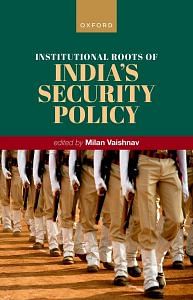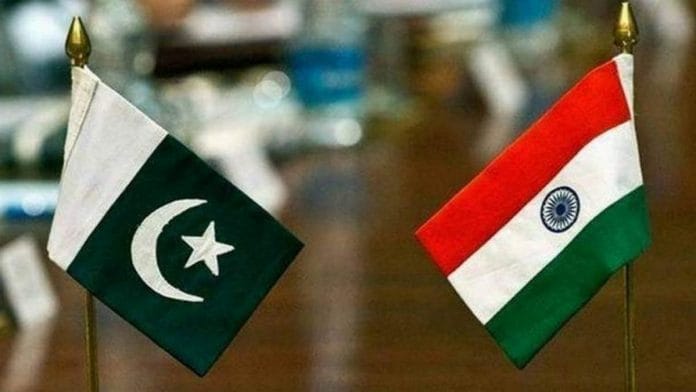By the 1980s, the R&AW’s purview had shifted from India’s immediate land borders to include Sri Lanka, Afghanistan, and even further afield to Africa. In Sri Lanka, the agency supported Tamil militant organizations, such as the Liberation Tigers of Tamil Eelam (LTTE). That this strategy ultimately backfired is another matter altogether. In Afghanistan, it forged close working relations with the KhAD, the Afghan security and intelligence agency created and trained by the KGB. They coordinated activities even as the Berlin Wall collapsed in 1989 and the KGB morphed into the Russian FSB in 1995.
India’s growing footprint in Africa, especially in the decolonized countries of Ghana and Namibia and in apartheid South Africa, can be attributed to Suntook’s personal interest in that part of the world. Whilst the R&AW closely coordinated with the MEA, its top leaders had a fair degree of latitude in determining its areas of operations. Prior to his retirement in 1983, Suntook set up a separate division—led by the maverick officer B. Raman—that focused on the growth of Sikh separatism, the Khalistan movement, and its ties to the Pakistani Inter-Services Intelligence (ISI).
With the goal of checking the ISI’s growing involvement in both Sikh separatism and the future of Jammu and Kashmir, Suntook’s successor, G.C. Saxena—also an IPS officer—reactivated the R&AW’s contacts with ‘Sindhi, Pashtun, and Baloch nationalists in Pakistan’. This was done at the direct order of Indira Gandhi, but the policy of ‘undercutting Pakistan’s influence’ continued under her successor and son, Prime Minister Rajiv Gandhi. During this period, the R&AW also opened two new desks: Counter Intelligence Team-X and Counter Intelligence Team-J, which were created to ‘wreak havoc in Pakistan and make [Pakistan’s] activities in Punjab “prohibitively expensive”’.
Political leadership and top officers’ personal interests determined the R&AW’s areas of interests and operations. As previously mentioned, this cut both ways. In the early 1990s, Prime Minister Narasimha Rao sought to cultivate better relations with both China and Myanmar. In 1993, India and China signed the first in a series of milestone agreements that sought to bring ‘peace and tranquility’ to the contested 3,488-kilometre-long border. With this in mind, Rao ordered the closure of the R&AW’s eastern operations. Further, in an effort to mend ties with Pakistan, Rao reportedly reduced ‘the lethal angle to India’s covert action in Afghanistan and Pakistan’. Rao, according to one notable academic, took this decision to avoid a ‘conflict with Pakistan over Kashmir, or in Afghanistan’, given India’s dire economic situation at the end of the Cold War.
In the late 1990s, Prime Minister Inder Kumar Gujral followed suit. He shut down the counter-intelligence teams that were ‘aimed at Pakistan’. Between 1990 and 1999, the R&AW was led by seven chiefs—a period of instability for India’s premier external intelligence agency. India’s political turmoil, which witnessed six changes in the prime ministership, clearly resulted in equally quick successions in leadership at the R&AW. Finally, in 1999, A.S. Dulat was appointed chief. Although he retired from the R&AW a year later in 2000, he continued to serve as an advisor to the government of Prime Minister Atal Bihari Vajpayee until 2004.
These were crucial years not only for the R&AW but also for India’s entire Intelligence apparatus. The surprise infiltration in Kargil in 1999 led to major restructuring in the R&AW, propelling it into the twenty-first century.
Also read: Intelligence work doesn’t come without its hurdles. Ex-R&AW, ISI chiefs recall life
Organizational Structure and Human Resources
The R&AW is headed by a chief at the rank of Secretary in the Government of India. This is similar to other arms of government like the MEA, which is led by the foreign secretary, or the Home Ministry, which is led by the home secretary. In 2020, 14 additional secretaries were placed in charge of different sections of the R&AW. The government has also approved a rank known as special secretary for three positions in the organization. These are considered on a case-by-case basis. Of the R&AW’s cadres, 40 to 50 per cent remain at the rank of undersecretary, deputy secretary, or director. Promotions are a problem for the organization, given the limited senior posts available. Most officers are still seconded from other services and ministries.
This personnel structure, as senior officers argue, has done little to create a professional intelligence service. There is ‘no breaking-in period’ for those seconded. There is also little training available to them, unlike for those that are directly recruited into the organization. The latter are sent to commando training, attached to the Border Security Force units for short periods, given language training, and even sent for short courses to the Jawaharlal Nehru University and other premier educational institutions. Most R&AW officers broadly undergo two forms of training: basic and field. Basic training consists of geostrategic analyses and learning the basics of intelligence and espionage. During field training, officers are ‘attached to military units to learn tactical intelligence’ and they learn ‘infiltration, interrogation and how to avoid capture’. Some officers are also sent to other countries for language training.
From what can be gleaned from open sources, the R&AW has four region-specific desks, each headed by a joint secretary: a Pakistan desk, a China and South East Asia desk, a Middle East and Africa desk, and a desk for other countries. In addition to this, an additional secretary for special operations and the head of ARC report directly to the R&AW chief. However, and interestingly, the ARC has a separate and much larger budget than the R&AW. The Special Service Bureau, raised in 1963 in the aftermath of the 1962 India–China war, reported directly to the R&AW. In addition to these responsibilities, the R&AW also ensures ‘security for India’s nuclear program and keeping details about nuclear
detonations quiet’.
 This excerpt from Institutional Roots of India’s Security Policy edited by Milan Vaishnav has been published with permission from Oxford University Press.
This excerpt from Institutional Roots of India’s Security Policy edited by Milan Vaishnav has been published with permission from Oxford University Press.






